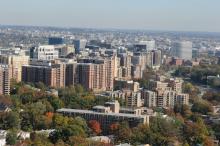Arlington Expands Internet Access for Low-Income Households - Community Broadband Bits Podcast 293

In Virginia, Arlington has found new ways to use its municipal network to reduce the digital divide. Katie Cristol, Chair of the Arlington County Board, and Jack Belcher, County Chief Information Officer, join us for episode 293 of the Community Broadband Bits podcast to explain what they are doing.
We discuss how a new residential development, Arlington Mill, will feature affordable Internet access delivered via Wi-Fi for low-income families. It was financed in part with Tax Increment Financing and required a collaboration between multiple departments to create.
We discuss the challenge of creating such collaborations as well as some of the other benefits the ConnectArlington project has delivered.
Remember to check out our interview with Belcher from 2014 for episode 97 of the podcast, when we discussed the decision to begin offering connectivity to local businesses.
This show is 27 minutes long and can be played on this page or via Apple Podcasts or the tool of your choice using this feed.
Transcript below.
We want your feedback and suggestions for the show-please e-mail us or leave a comment below.
Listen to other episodes here or view all episodes in our index. See other podcasts from the Institute for Local Self-Reliance here.
Thanks to Arne Huseby for the music. The song is Warm Duck Shuffle and is licensed under a Creative Commons Attribution (3.0) license.


